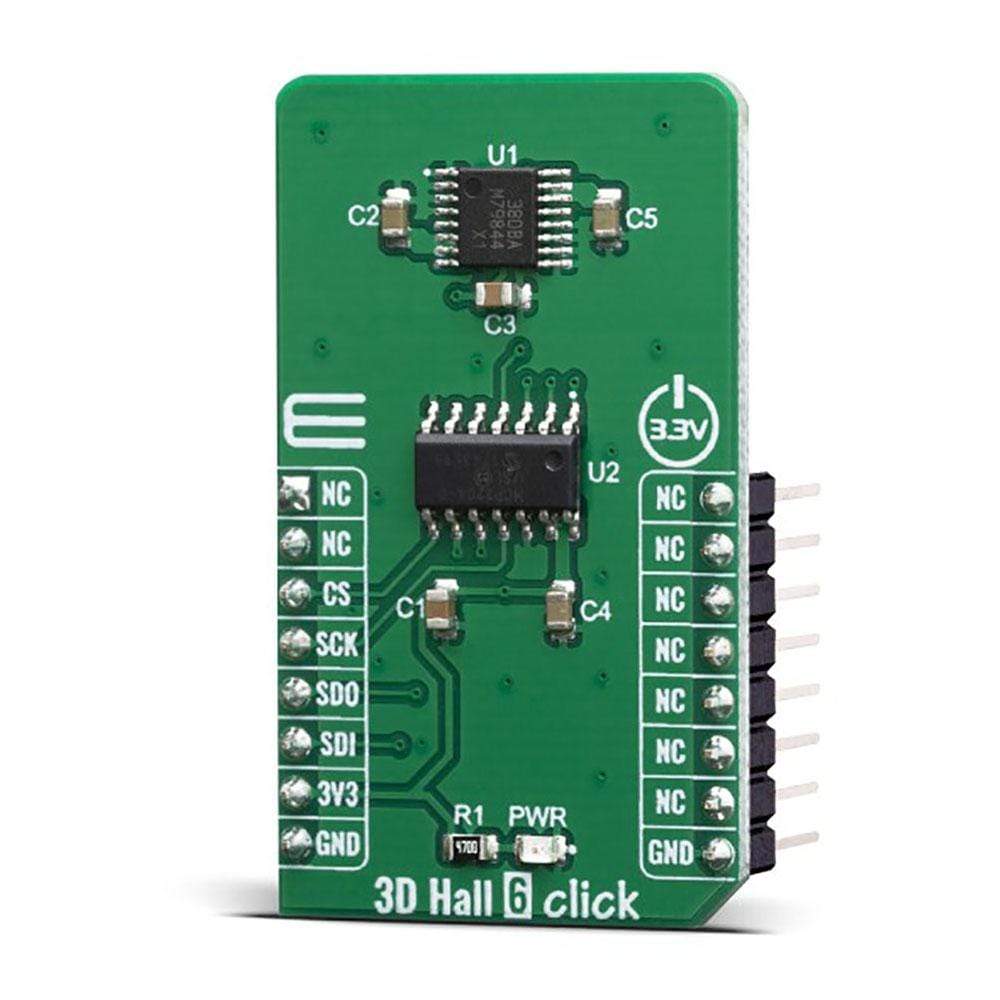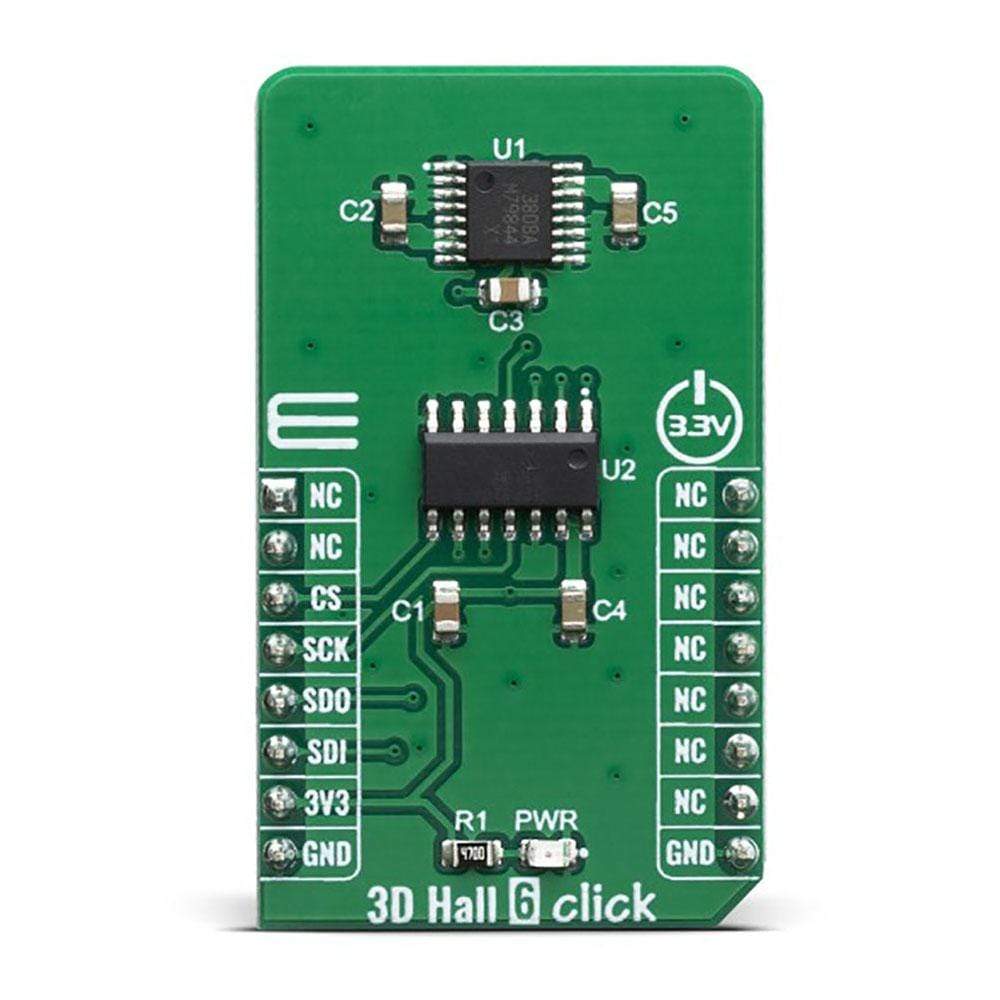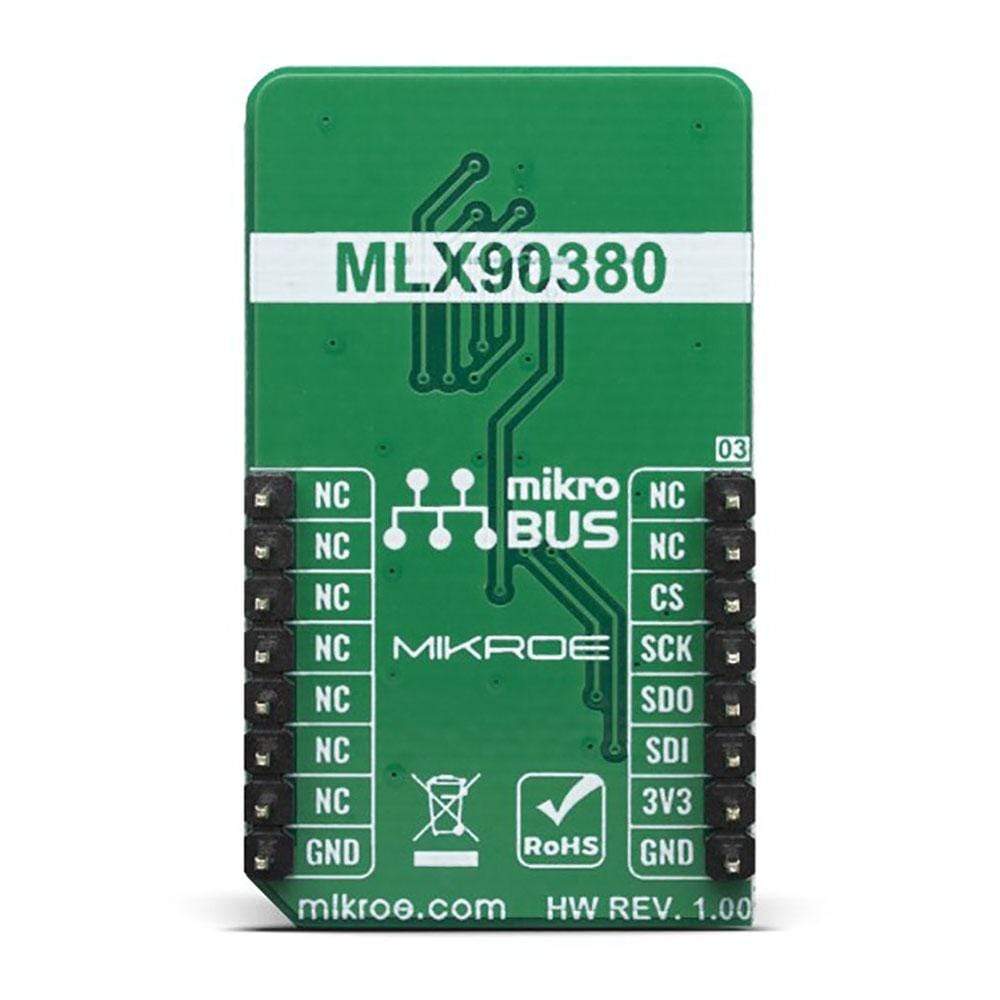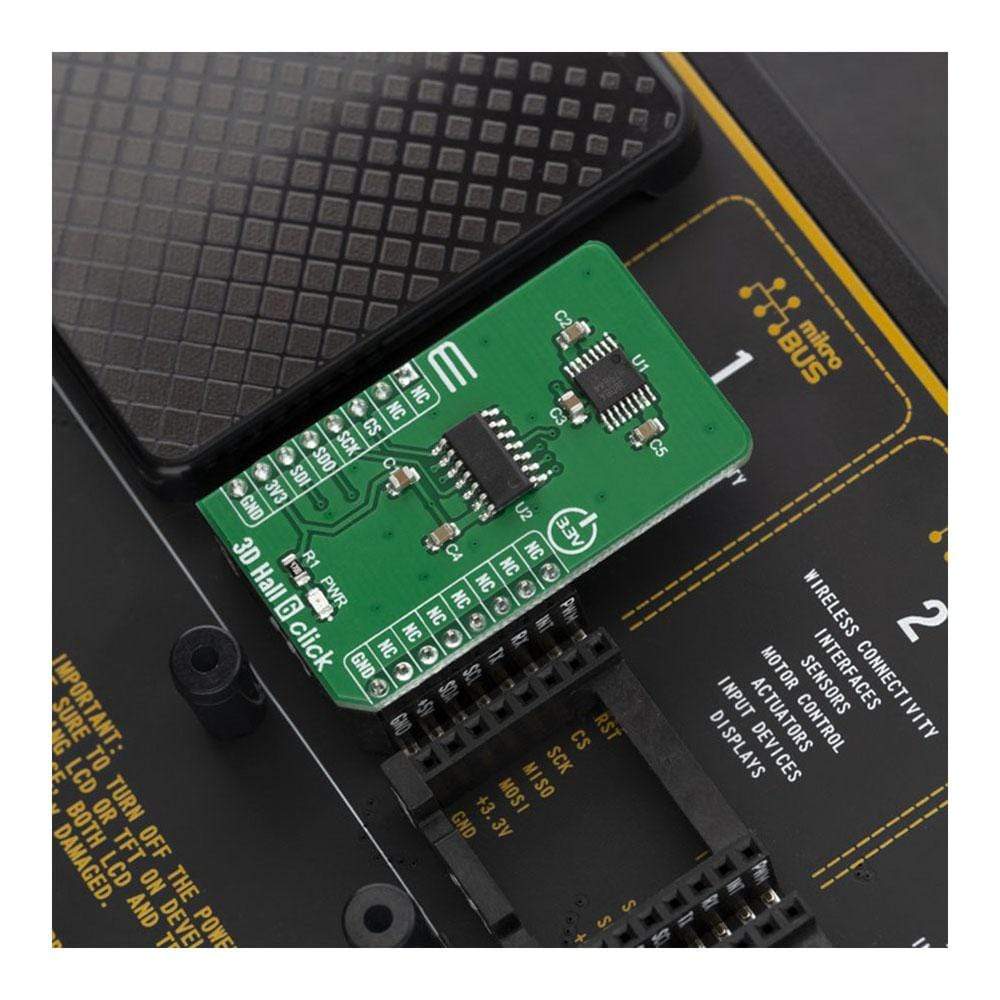
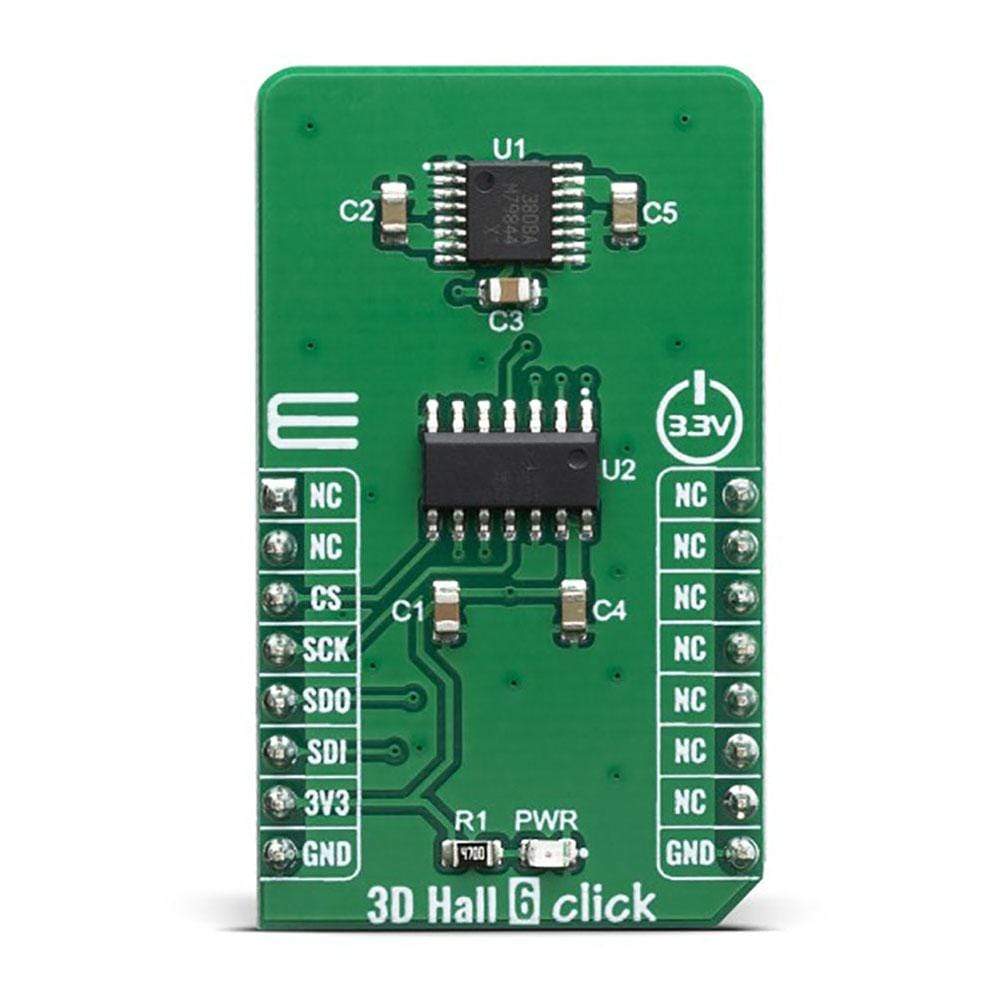
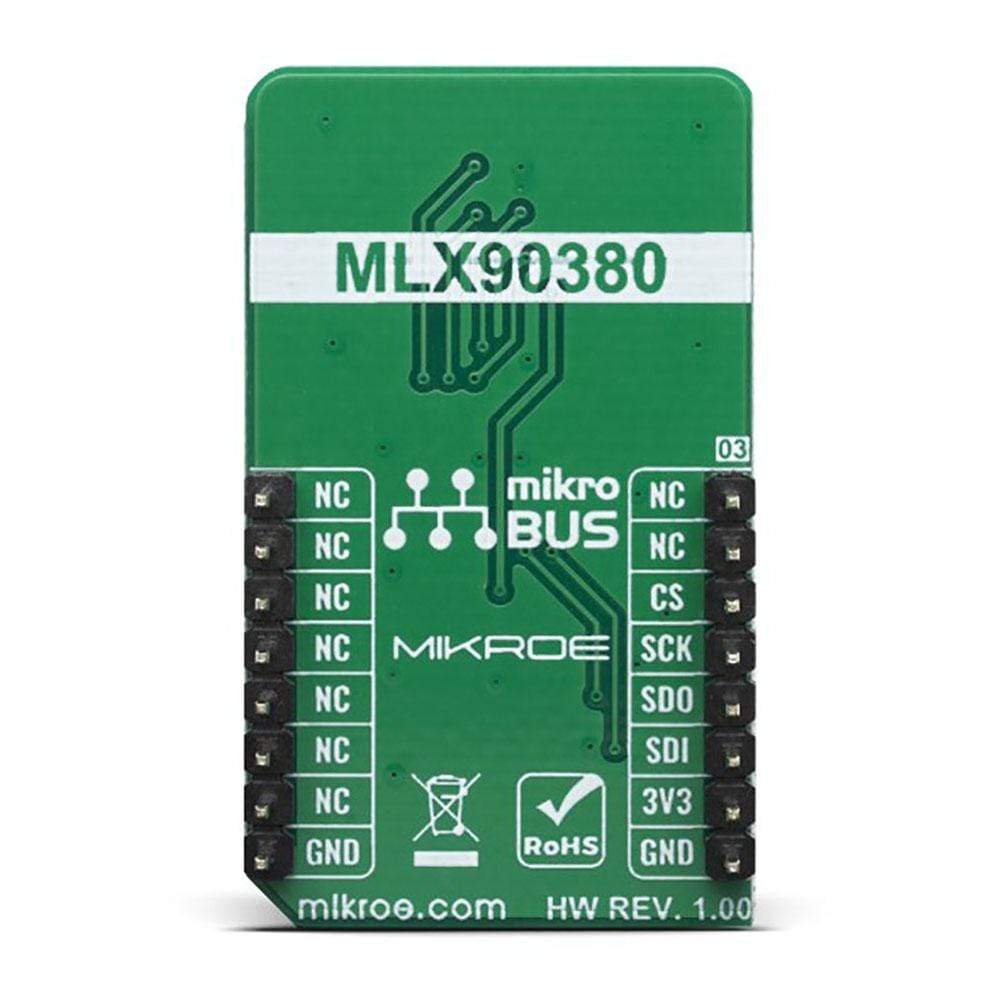
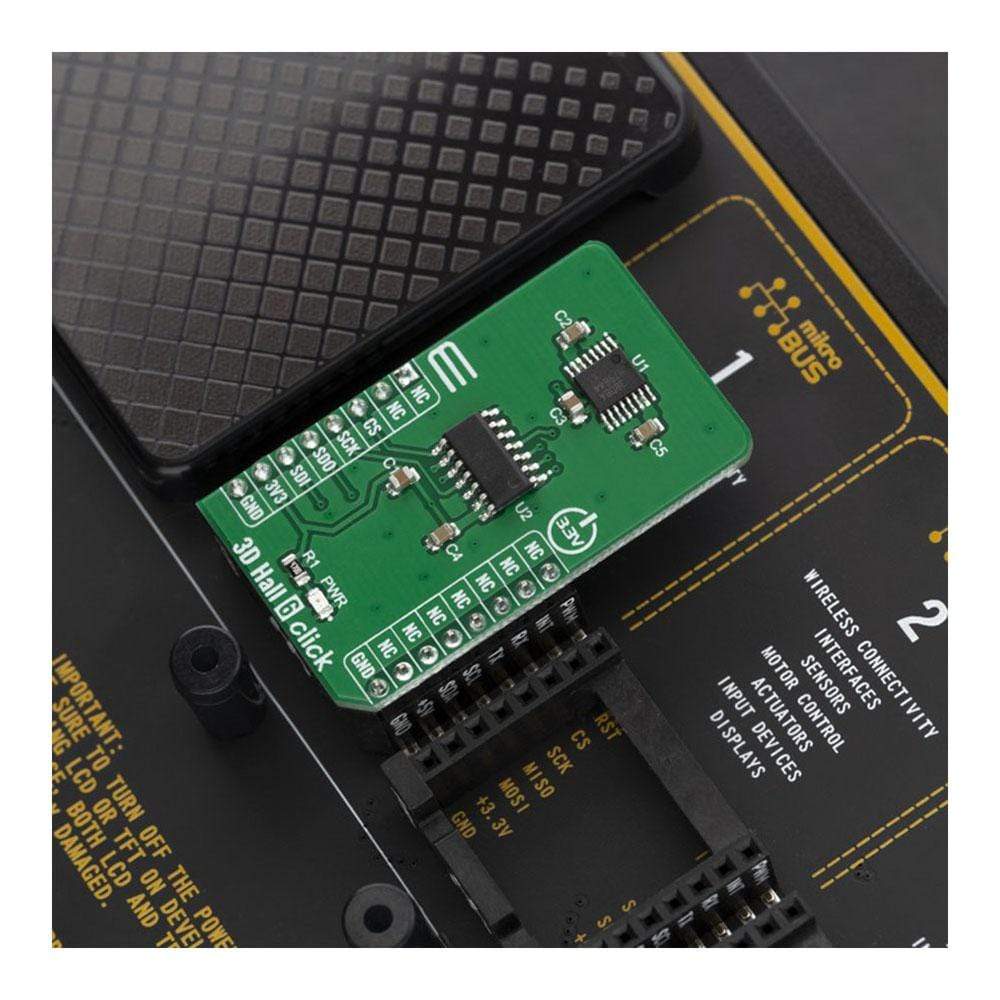
Overview
The 3D Hall 6 Click Board™ is a very accurate, magnetic field sensing Click Board™, used to measure the intensity of the magnetic field across three perpendicular axes. It is equipped with the MLX90380, a monolithic contactless sensor IC sensitive to the flux density applied orthogonally and parallel to the IC surface, from Melexis. This IC has a separate Hall sensing element on each axis, which allows a very accurate and reliable measurement of the magnetic field intensity in a 3D space, offering a basis for accurate positional calculations. The 3D Hall 6 click supports the industry-standard SPI communication protocol for communicating with the main MCU.
The 3D Hall 6 click is supported by a mikroSDK compliant library, which includes functions that simplify software development. This Click Board™ comes as a fully tested product, ready to be used on a system equipped with the mikroBUS™ socket.
Downloads
Le 3D Hall 6 Click Board™ est un Click Board™ de détection de champ magnétique très précis, utilisé pour mesurer l'intensité du champ magnétique sur trois axes perpendiculaires. Il est équipé du MLX90380, un circuit intégré de capteur sans contact monolithique sensible à la densité de flux appliquée orthogonalement et parallèlement à la surface du circuit intégré, de Melexis. Ce circuit intégré possède un élément de détection Hall séparé sur chaque axe, ce qui permet une mesure très précise et fiable de l'intensité du champ magnétique dans un espace 3D, offrant une base pour des calculs de position précis. Le 3D Hall 6 click prend en charge le protocole de communication SPI standard de l'industrie pour communiquer avec le MCU principal.
Le Click 3D Hall 6 est pris en charge par une bibliothèque compatible mikroSDK, qui comprend des fonctions qui simplifient le développement logiciel. Ce Click Board™ est un produit entièrement testé, prêt à être utilisé sur un système équipé du socket mikroBUS™.
| General Information | |
|---|---|
Part Number (SKU) |
MIKROE-3764
|
Manufacturer |
|
| Physical and Mechanical | |
Weight |
0.018 kg
|
| Other | |
Country of Origin |
|
HS Code Customs Tariff code
|
|
EAN |
8606018717002
|
Warranty |
|
Frequently Asked Questions
Have a Question?
Be the first to ask a question about this.

